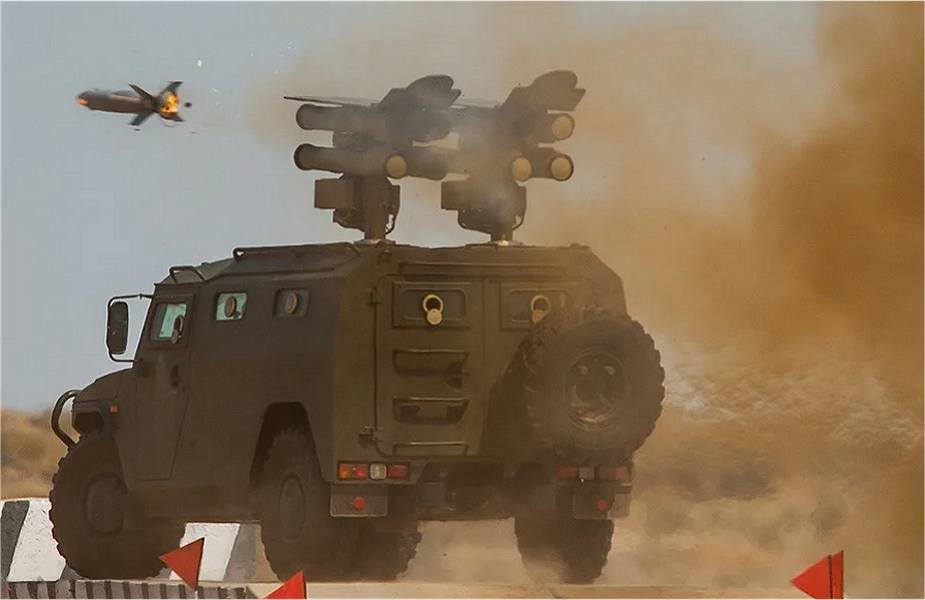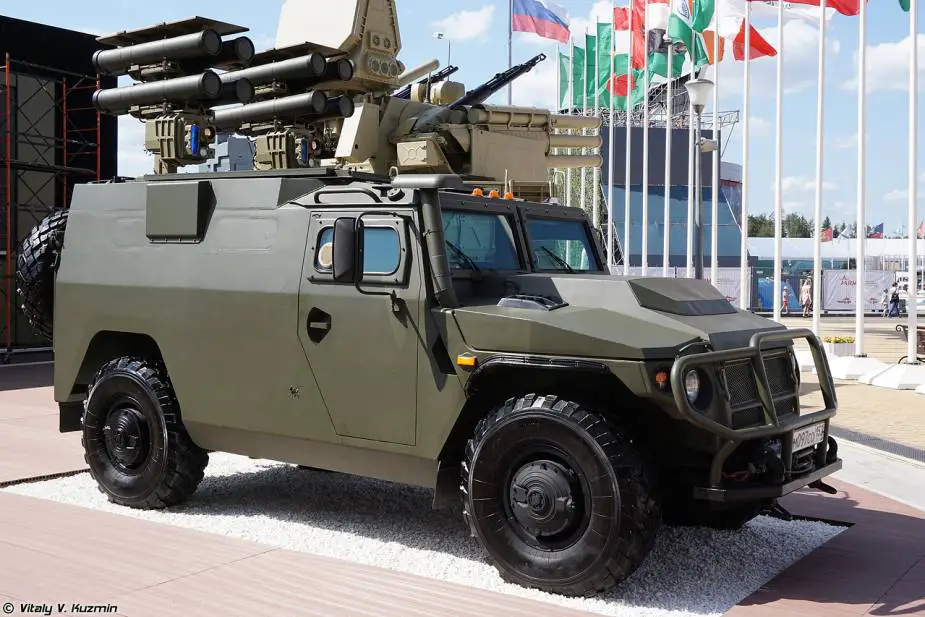- Army
- Conflicts in the world
- Israel - Iran conflict 2025
- Pakistan - India Conflict 2025
- Russia Ukraine War 2022
- Libya conflict day by day
- HAMAS - Israel War 2023
- Operation Serval in Mali French Army
- Sangaris operation Central African Republic
- Sangaris opération militaire République Centreafrique
- Ukraine - Russia conflict
- Syria conflict news
- Defence & Security Industry Technology
- Armies in the world
- Analysis Defense and Security Industry
- Conflicts in the world
- Navy
- Air
New Russian Kornet-D anti-tank armored vehicle set to challenge Ukraine's armored might
In a report released by the Russian Ministry of Defense on June 9, 2023, the freshly launched anti-tank wheeled armored vehicle, the Kornet-D, is positioned as a 'game-changer' in combating the Bradley IFVs (Infantry Fighting Vehicles) and Leopard 2 tanks that have been gifted to the Ukrainian military. Equipped to annihilate tanks and other armored vehicles, the Kornet-D can even take out fortified structures, soldiers in shelters, and low-velocity, low-altitude targets from a distance of up to 10 kilometers.
Follow Army Recognition on Google News at this link

The Russian Kornet-D is ready to be deployed in Ukraine to fight US Bradley IFVs and Leopard 2 tanks used by the Ukrainian army. (Picture source Russian Social Network)
Countering the Ukrainian army's newly donated armored vehicles and tanks has emerged as a prime objective for Russian troops stationed in Ukraine. Russian tank divisions have reportedly been identifying the vulnerabilities of these vehicles to enhance their destructive capacity. Moreover, the Russians appear to have constituted specialized anti-tank units that employ man-portable anti-tank weaponry.
The Kornet-D is a cutting-edge anti-tank missile carrier vehicle fully designed and developed by the Russian defense industry. First introduced during the rehearsal of the Victory Day military parade in April 2015, this vehicle is built upon the Tigr-M, a 4x4 armored tactical vehicle.
The Kornet-D comes equipped with two sets of four Kornet missile launchers, each independently raised for an attack. These launchers are cleverly hidden within the vehicle in road position, taking mere seconds to lift and lock onto the target. Each launcher comes with its individual optical surveillance, tracking, and guidance systems, with the vehicle carrying 16 missiles in total and 8 ready to be deployed.
One of the notable features of the Kornet-D is its ability to discharge a two-missile volley less than a second apart, either at two separate targets or simultaneously at a single one. This feature is designed to outsmart active protection systems, whereby the first missile triggers the tank's active protection system, allowing the second missile to reach the target. The dual-missile launch also increases the likelihood of tank destruction when the target lacks an active protection system.
The Kornet-D can operate under various conditions, including adverse weather and enemy countermeasures. The missile launch can be remotely controlled from up to 50 m away using a remote control unit.
Produced by the Russian KBP Instrument Design Bureau, the Kornet is a highly efficient anti-tank guided missile (ATGM) system. Primarily, it is utilized to engage and destroy armored vehicles, fortifications, and other targets.
A typical Kornet missile system comprises a launcher unit and a set of missiles, with the launcher being portable and adaptable to different platforms such as wheeled vehicles, tracked vehicles, or tripod mounts. The missiles are wire-guided and come with a tandem-charge high-explosive anti-tank (HEAT) warhead, designed to defeat modern tank armor.
With a maximum range of around 5.5 kilometers (3.4 miles) and an ability to penetrate up to 1,200 millimeters (47 inches) of armor, depending on the variant, the Kornet missile uses a semi-automatic command-to-line-of-sight (SACLOS) guidance system. This system allows the operator to track the target and guide the missile, ensuring it stays on course until impact.

The Kornet-D anti-tank armored vehicle is based on the Tigr-M 4x4 armored vehicle. (Picture source Vitaly Kuzmin)


























